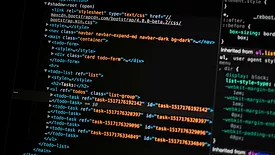Home » Keywords: » software security
Items Tagged with 'software security'
ARTICLES
Global News & Analysis
Generative AI Remains Growing Concern for Organizations
September 9, 2025
Sign-up to receive top management & result-driven techniques in the industry.
Join over 20,000+ industry leaders who receive our premium content.
SIGN UP TODAY!Copyright ©2025. All Rights Reserved BNP Media.
Design, CMS, Hosting & Web Development :: ePublishing




.webp?height=168&t=1757344641&width=275)






.webp?height=168&t=1747746820&width=275)
